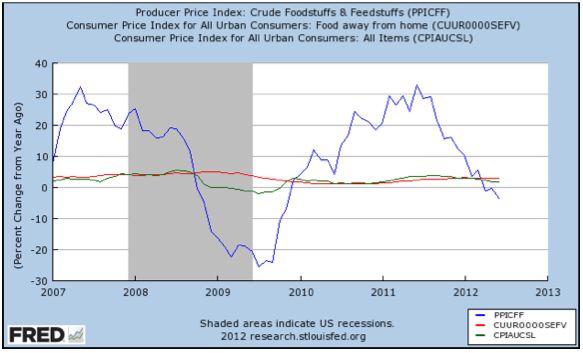The US debt ceiling suspension, signed in February 2018, expires at the beginning of March this year. Some commentators are of the view that the US Treasury must carry out special measures if it expects a delay in raising the debt ceiling in March.
The Treasury would have to draw down its deposits at the Fed and deposit the cash in various government department accounts at commercial banks, for future use to pay government salaries and contractors’ fees.
These commentators are of the view that the Treasury deposit withdrawals act like QE (quantitative easing) and the Treasury deposit build-ups like QT (quantitative tightening). However, is it the case?
If in an economy people hold $10,000 in cash, we would say that the money supply in this economy is $10,000. If some individuals then decided to place $2,000 of their money in demand deposits, the total money supply will still remain $10,000, comprising of $8,000 cash and $2,000 in demand deposits.
Now, if government taxes people by $1,000, this amount of money is then transferred from individual’s demand deposits to the government’s deposits. Conventional thinking would view this as if the money supply fell by $1,000. In reality, however, the $1,000 is now available for government expenditure meaning that money supply is still $10,000, comprising of $8,000 in cash, $1000 in individuals demand deposits and $1,000 in government deposits.
If the government were to withdraw $1000 from its deposit with the Fed and buy goods from individuals then the amount of money will be still $10,000 comprising of $8,000 in cash and $2,000 in individuals demand deposits.
From this we can conclude that a large withdrawal of money from the government deposit account with the Fed is not going to strengthen the money supply as suggested by popular thinking.
What are the sources for money expansion?
The key sources of money creation is the Fed’s assets buying and fractional reserve banking. When the Fed buys assets, it pays for these assets by issuing a check. The check in turn, once placed by the seller of the asset in his bank deposit account, increases the amount of money in the economy. The check that the Fed has issued to the seller of an asset has given rise to the money out of “thin air”.
By means of fractional reserve lending, the banks also generate money out of “thin air”. For instance, by holding $8,000 in demand deposits with banks, individuals have an absolute claim on the $8,000. In this respect, the bank could be seen as providing a storage facility for money for individuals. (The money rather than being kept under the mattress is now stored with banks).
The $8,000 that deposited with banks also labelled as reserves that the banks hold – in this case 100% reserves.
Let us now say that the banks decided to use half of the deposited money and lend it out. This $4,000 has now become available to various borrowers through demand deposits that the bank has established for them. What we have now is that the amount of claims on money has increased from $8,000 to $12,000. However, the amount of cash in reserves is only $8,000.
This means that rather than having 100% in cash reserves what we now have is only 66.67% in cash reserves. The $4,000 of new deposits that the banks have generated is money out of “thin air”. The banks loaned the $4,000 without permission so to speak from the depositors.
The amount of money that is now available to individuals is $12,000, comprising of $8,000 cash placed in demand deposits and $4,000 out of “thin air” generated by the bank’s unbacked lending. This unbacked credit is a violation of what the actual lending process should be. In the example below, we provide an explanation to the essence of what credit is all about.
Let us say a baker produces 10 loaves of bread, consumes 2 loaves and saves 8 loaves. He lends 8 loaves of bread to the shoemaker. The 8 loaves constitutes credit provided by baker to the shoemaker. At the maturity date (say one month), the shoemaker repays back 9 loaves. The extra one loaf constitutes an interest. So what we have here is that unconsumed goods i.e. real savings are loaned by the baker to the shoemaker.
The introduction of money does not alter the essence of what credit is. Rather than lending directly to the shoemaker 8 loaves of bread the baker could now exchange the 8 loaves for let us say $8 which he places in a savings or time deposit with a bank. By placing the $8 in a time deposit with a bank, the baker has in fact agreed to lend the $8 via the bank intermediation. (The baker has agreed to relinquish his ownership of $8 for the duration of the loan). The bank, as an intermediary, could lend this amount to a shoemaker. The shoemaker with the $8 could now purchase 8 loaves of bread.
The baker could also decide to keep the $8 in his demand deposits. By placing his $8 in demand deposit the baker makes in fact, a statement that he chooses not to relinquish the ownership over the $8 – the baker exercises here an absolute claim over the $8. If the bank were to lend the $8 without bakers’ agreement, we will have here more claims on a given amount of dollars. In our case, we will have $16 claims on $8 cash. (Note that the baker is under the impression that he has an access to his $8 any time he deems necessary. Likewise, the borrower of $8 is under the same impression).
In this emerging situation if the baker and the borrower were to exercise, their claims over the money instantly this will lead to bank’s bankruptcy since it has only $8 in cash.




